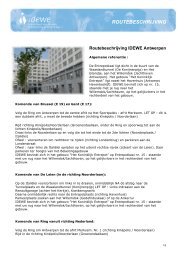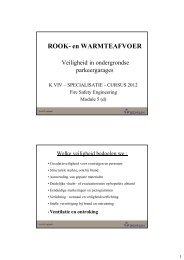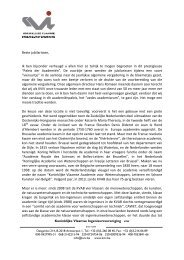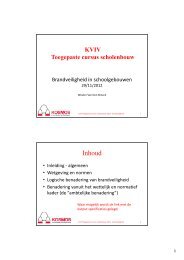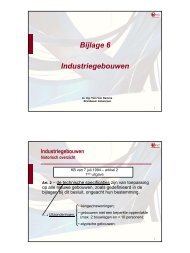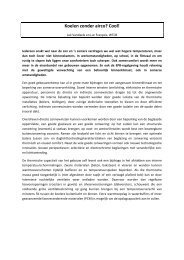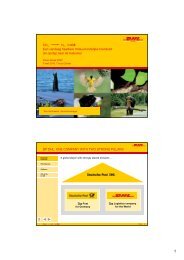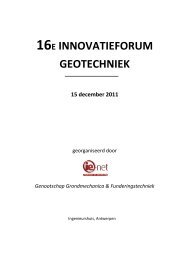An Updated International Survey ofComputer Models 103 Detailed Description: CFAST is the Consolidated Model of Fire Growth and Smoke Transport. It is the kernel of the zone fire models that are supported by BFRL. FAST and FASTLite are data editors and reporting tools which are ‘‘front’’ and ‘‘back’’ ends for the model CFAST. For additional details on the naming convention, please visit the web site http://fast.nist.gov/versionhistory.htm. There are a several data editors which have been developed elsewhere: FireCAD from the RJA Group and FireWalk through the University of California, Berkeley. CFAST is a zone model and is used to calculate the evolving distribution of smoke, fire gases and heat throughout a constructed facility during a fire. In CFAST, each compartment is divided into two layers, and many zones for detailed interactions. The modeling equations used in CFAST take the mathematical form of an initial value problem for a system of ordinary differential equations (ODE). These equations are derived using the conservation of mass, the conservation of energy, the ideal gas law and relations for density and internal energy. These equations predict as functions of time quantit<strong>ie</strong>s such as pressure, layer heights and temperatures given the accumulation of mass and enthalpy in the two layers. The CFAST model then solves of a set of ODEs to compute the environment in each compartment and a collection of algorithms to compute the mass and enthalpy source terms. The model incorporates the evolution of the spec<strong>ie</strong>s, such as carbon monoxide, which areimportant to thesafety of individuals subjected to a fire environment. Version 3.1.6 models up to 30 compartments, a fan and duct system for each compartment, 31 individual fires, up to one flame-spread object, multiple plumes and fires, multiple sprinklers and detectors, and the ten spec<strong>ie</strong>s considered most important in toxicity of fires including the effective fatal dose. The geometry includes variable area–height relations, ignition of multiple objects such as furniture, thermophysical and pyrolysis databases, multilayered walls, ignition through barr<strong>ie</strong>rs and vents, wind, the stack effect, building leakage, and flow through holes in floor–ceiling connections. The distribution includes graphic and text report generators, a plotting package and a system for comparing many runs done for parameters REFERENCES 1. Fr<strong>ie</strong>dman, R., ‘‘An International Survey of Computer Models for Fire and Smoke,’’ Journal ofFire Protection Engineering, Vol. 4, No. 3, 1992, pp. 81–92.
104 S. M. OLENICK AND D. J. CARPENTER 2. Hunt, S., ‘‘Computer Fire Models,’’ NFPA Update Section News, Vol. 1, No. 2, Oct./Nov., 2000, pp. 7–9. 3. Zukoski, E. E., ‘‘Development of a Stratif<strong>ie</strong>d Ceiling Layer in the Early Stages of a Closed- Room Fire,’’ Fire and Materials, Vol. 2, No. 2, 1978. 4. Cox, G. ‘‘Compartment Fire Modelling,’’ Combustion Fundamentals ofFire, Academic Press, 1995, p. 334. 5. Bukowski, R. W., Peacock, R. D., Jones, W. W. and Forney, C. L., Technical Reference Guide for the HAZARD I Fire Hazard Assessment Method, Volume 2, NIST Handbook 146/II, National Instituteof Standards and Technology, June1991. 6. BuildingEXODUS V3.0 User Guide and Technical Manual, Doc Rev 3.0. University of Greenwich, May 2000. 7. CIB Program on Performance-Based Building http://www.cibprogram.dbce.csiro.au 8. Danish Instituteof FireTechnology, ARGOS User’s Guide, Datovej 48, DK 3460 Birkeroed, 1991. 9. Cooper, L. Y. and Stroup, D. W., Calculating Available Safe Egress Time (ASET) – A Computer Program and User’s Guide, NBSIR 82-2578, National Bureau of Standards (now National Instituteof Standards and Technology), 1982. 10. Walton, W. D., ASET-B: A Room Fire Program for Personal Computers, NBSIR 85-3144-1, National Bureau of Standards (now National Institute of Standards and Technology), 1985. 11. A User’s Guide to BRANZFIRE Software, Building Research Association of New Zealand, 2000. 12. Nakamura, K. and Tanaka, T., ‘‘Predicting Capability of a Multiroom Fire Model,’’ In: Proceedings ofthe Second International Symposium on Fire Safety Sc<strong>ie</strong>nce, 1988. 13. Cooper, L. Y. and Forney, G. P., The Consolidated Compartment Fire Model (CCFM) Computer Code Application CCFM.VENTS, Part I, NISTIR 4342, National Institute of Standards and Technology, 1990. 14. Peacock, R. D., Reneke, P. A., Jones, W. W., Bukowski, R. W., Forney, G. P., A User’s Guide for FAST: Engineering Tools for Estimating Fire Growth and Smoke Transport, NIST Special Publication 921, National Institute of Standards and Technology, 2000. 15. Offenhauser, F., Barth, U. and Schnatz, G., ‘‘CFIRE-X: Simulation of Extinguishing Methods Concerning Room Fires,’’ VFDB, n. 1, 1991. 16. Bodart, X. and Curtat, M., CIFI Computer Code: Air and Smoke Movement During a Fire in a Building With Ventilation Ducts Networks Equipment, CIB Publication 104, CIB W14 Workshop on Fire Modeling, Berlin, West Germany, March 1987. 17. Ho, V., Siu, N. and Apostolakis, G., ‘‘COMPBRN III–A FireHazard Model for Risk Analysis,’’ Fire Safety Journal, Vol. 13, No. 2–3, 1988. 18. Babrauskas, V., COMPF2 – A Program for Calculating Post-Flashover Fire Temperatures Final Report, NBS Tech Note 991, National Bureau of Standards (now National Institute of Standards and Technology), 1979. 19. A User’s Guide for DSLAYV: Simulating Fires in Natural and Forced Ventilated Enclosures, FOA Report C20637, National Defense Research Institute, Sweden, 1986. 20. Port<strong>ie</strong>r, R. W., Peacock, R. D. and Reneke, P. A., FASTLite: Engineering Tools for Estimating FireGrowth and SmokeTransport, NIST Special Publication 899, National Instituteof Standards and Technology, 1999. 21. Heins, T., ‘‘Simulation Model for the Safety Assessment of Spreading Smoke From Fires in Extended Enclosures,’’ Dissertation, Technical University Braunschweig, 1991. 22. Nicholas, B. D. and Gregory, W. S., FIRAC User’s Manual: A Computer Code to Simulate Fire Accidents in Nuclear Facilit<strong>ie</strong>s, NUREG/CR-4561, LA-10678-M, Los Alamos National Lab, 1986. 23. Shestopal, V. O., ‘‘Computer Program for an Uninhibited Smoke Plume and Associated Computer Software,’’ Fire Technology, Vol. 29, No. 3, 1993, pp. 246–267.




